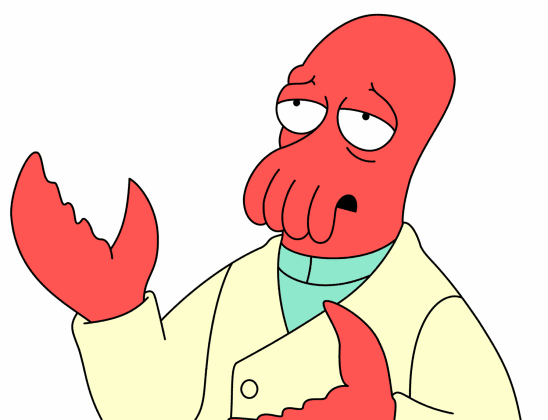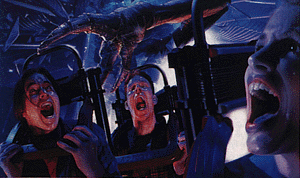I would like to propose a compromise that I believe seems to meld many of these suggestions into a cohesive, comprehensive, resilient and sustainable solution. Once again, this is my completely uninformed opinion. BTW, I dont work for WDW or any transit-related industry.
There are many interesting suggestions being posted here. The addition of a third Monorail line that would service the newer parks (AK & HS) and possibly service Boardwalk & Downtown would be ideal. I understand that the EPCOT monorail station was originally conceived to function as a transfer hub for future lines but I believe that the added infrastructure wouldn’t be acceptable by WDW management. I believe that the additional station structure, rail trusses over the EPCOT loop, increased space for shaded passenger staging areas as well as the need to re-route 10’s or possibly 100’s of bus routes directly into the EPCOT drop-off area in order to properly support the new transit system would force the Imagineers and upper management to reject this option. In Addition, the aesthetics of an enlarged station would probably be rejected as the view now coming into the Park would not be of Spaceship Earth but this new transit hub. Could they design a futuristic and beautiful facility that looks straight out of Disney’s original EPCOT theory? Sure. Would they? Probably not.
Now, if a hub that linked the EPCOT loop and a future AK-HS-BW-DD loop were created within the existing EPCOT loop on vacant land, a massive and efficient Resort-wide Transit Hub (Resort Transit Center ? RTC ?, anything better ?) could be created. A location that offers excellent access (World Dr.), large amounts of vacant land, geographical significance (almost centered on property) with the space to handle Monorail, Trolleybus, conventional bus, private vehicles for parking or drop-off, as well as expansion with a potential PRT addition as many of you have proposed. In addition, this area could function as the transit support facility; network power-gen, maintenance, storage, charging facilities, centralized Transit Operations Control Center. This location could house a centralized parking for day-visitors that may not be visiting a sole Park and leaving. Going to MK and then dinner at Cat Coura’s, no problem. This hub connects to all Monorail loops, Trolleybus paths as well as functioning as a bus stop and PRT access station. This would simplify the travel between these locations without the need to move cars and find parking in two separate lots.
The east-west monorail link is very alluring. There are footings and easements scattered about Lake Buena Vista and we have all seen the artist’s impressions with the monorail passing through the DD parking lot. I believe that this loop would have the ridership to justify the cost if it reached enough key locations. AKL, AK, Transit Hub, BW, HS, DD, and maybe a stop somewhere near Buena Vista to service the area DVC resorts. The marriage of Monorail conveyance that would service numerous Resorts, all Parks as well as secondary entertainment complexes would prove to extremely sellable to guests booking expensive vacations. Obviously, additional spur lines for casualty, maintenance and tug staging would be required. In addition, it would seem logical to have Monorail Maintenance facilities on each physical loop to reduce track-swapping and system disruptions. One large facility could probably service both the EPCOT loop as well as the proposed additional AK-HS-DD loop.
Next, by implementing the use of Hybrid Trolleybuses in a Hub-and-Spoke system originating at the Transit Hub, passenger throughput Resort-wide would be fast, comfortable and efficient. Theses vehicles would become the backbone of the Resort Transit System. The Trolleybuses would follow dedicated and isolated surface road-lanes and direct roadways built solely for their use. The benefit of traffic avoidance combined with minimal to no personal vehicle interactions would dramatically increase safety and reduce transit times. These ‘Transit-Roads’ would be multi-lane and may be restricted (RF gates?) and only accessible for Trolleybuses and PRT’s as deemed appropriate by system designers. This level of service is almost as adaptable as a simple bus system. Rescheduling, redirecting around incidents, modification of service are all easily handled by this flexible solution. As I mentioned earlier, the Trolleybus would offer a combination of higher-capacity, good transit speeds, increased passenger seat-miles with higher approval ratings as reduced operating and maintenance including lower fuel use and emissions discharge. Design the vehicles and stations correctly and you have the next ‘transit of the future’ for guests to rave about. With an appropriately sized fleet and engineered routes, these vehicles would provide high-capacity, smooth, quiet, efficient, comfortable, low-stress and attractive service? All these are transit systems goals.
Upgrading and reducing the number of the existing fleet of busses over time to Hybrid would gradually reduce operating costs as well as reducing the carbon footprint of this massive fleet. Reducing the number of buses would be accomplished through the Hub-and-Spoke Trolleybus system leaving more conventional and smaller buses to satisfy less congested and/or ‘cross-spoke’ routes (i.e. AKL - Blizzard Beach, HS - DD, FW – BW). Although similar to the Trolleybus, the standard bus is smaller, less efficient but more maneuverable. Buses would still serve needed to supplement the upgraded system but on a smaller scale than at present. Special events and/or extremely high demand would press supplemental buses into service as needed.
Finally, with the improved transit system throughput as laid out above, families and small groups still have individual and specific needs. They could utilize the new PRT system that would focus on point-to-point transits. To clarify, if the improved Transit system is now more satisfactory for users transiting throughout the Resort, then the supplemental transits such direct trips for families could now be serviced by PRT’s. Family ventures that previously would require the use of the existing bus service, taxis or rental cars would now be serviced by PRT. A family of 5 staying at the Wilderness Lodge that would like to goto the Boardwalk area for a night of dining and entertainment would now simply use the PRT system to/back. They would simply goto their Resort PRT access-point (PRT station ?, PRT Valets ?) and utilize the private and safe PRT vehicles. There would be PRT stations throughout the Resort at Resorts and secondary locations such as Downtown Disney. The family is comfortable knowing that there is a large fleet of PRTs moving constantly throughout the Resort to safely carry them to their destination. I don't believe that creating a dedicated track-based system would be financially or structurally beneficial. Any individual casualties would cripple this system in much the same way a out-of-service Monorail would inhibit that system. Would they follow the same dedicated and proprietary routes as Trolleybuses, maybe? Obviously, any major roadways would be programmed off-limits but secondary surface roads with the dedicated and isolated lanes not accessible by motor vehicle traffic would offer efficient pathways for the PRTs. In addition to the restricted lanes on the roadways, PRTs could utilize the system roadways that would be constructed throughout the Resort that are Transit only. Once again, does this system remove the need for buses and taxis, no. But it can dramatically reduce the need for private and commercial vehicles transiting on Resort roadways. Placing PRTs at Parks themselves may add unnecessary volume that would be best served by one of the high-capacity systems. This would need to be based on research based numbers. How many taxis are requested to Parks proper? If there is a need for individuals to return to their Resorts, do they really want to go through Transit transfers? Would direct PRT service from Park to Resort be warranted? Maybe but only if the infrastructure does not becoming unwieldy and cumbersome for the higher-capacity units.
Supplying such a large fleet of these PRT vehicles for free use may be too cost prohibitive for WDW to implement. It is reasonable to think that if the guests are able to utilize a private, safe and comfortable means of intra-resort transportation, then a reasonable surcharge to help alleviate system costs would be appropriate. If you are willing to pay for a rental car or taxis, then this new mechanism offered at a smaller and consistent rate would be acceptable to most families. For example, if a family would spend $12-15 each way for transport for 5 from AKL to Downtown Disney, then a standardized system-wide rate $5 is a bargain. No gouging, no haggling. Would intra-resort rates be necessary? Using the established major Park & Resort locations as guidelines, you could implement a fair and equitable rate structure (i.e. starting at staying within a region such as the Magic Kingdom; Magic Kingdom Park, Contemporary/Bay Lake, Wilderness Lodge, Fort Wilderness, Polynesian Resort, Grand Floridian Resort, Shades of Green, TTC) for $5 per PRT trip, regardless of passenger count up to the car capacity (4-6-8-10?). Transiting to another region (i.e. MK to DD) could cost $10 using the same passenger guidelines. Maybe, offereing the option of family plan for $10/day on your Resort RFID Key Card for unlimited use throughout your stay. That’s still a bargain that is also convenient, safe and efficient.
Obviously, the economics of the above system could be discussed endlessly. The likelihood of WDW, Inc. of ever implementing any or all of these suggestions is unlikely at best. Could someone else come up with a better suggestion that these, absolutely. Do I believe the above to be a good start to a sustainable transit system that could last decades, yes? Please feel free to comment, good or bad.





